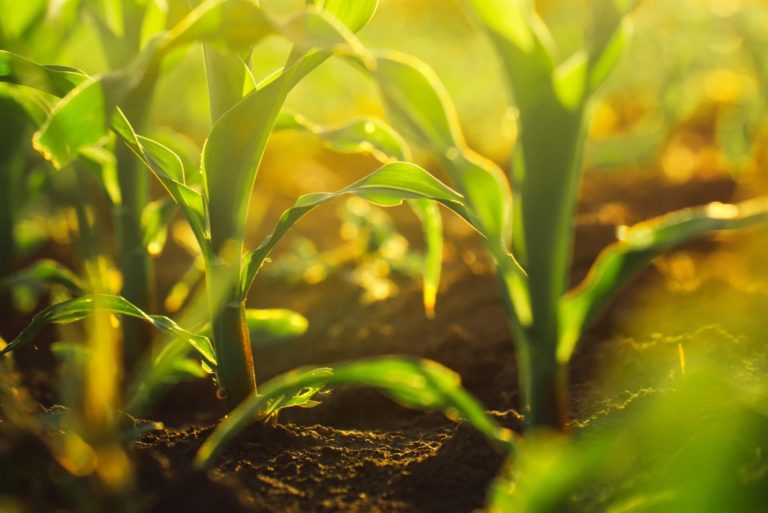In light of recent events that have been happening across the country, most individuals are urged to stay at home unless they need to go out for work. Since we’re usually spending most of our time in our backyard, or front yard, it’s a good idea to spice up your garden with a bit of some self-sufficient crops. It’s about time that your garden will start giving back to you from all the hard work that you’ve been putting out for it.
What Are the Best Crops to Use?
Your garden is an extension of your home. While it’s a suitable way of decorating and making your house look good, the fertile soil can be used to grow several plants, including edible crops and spices.
We’ll be enumerating some best-known crops that you can grow in your garden. We’ll start with those that can be easily produced to some that can be a bit tricky. Either way, we’re sure that they will all yield a bountiful harvest.
Onions and Garlic
Can you think of a dish that didn’t use onions or garlic? Save for a few recipes, onions and garlic are stable in almost anything that you’re cooking. No one can deny that onions and garlic are so crucial in spicing up our food. Whether you’re cooking pasta, spaghetti, burritos, tacos, rice-based meals, or a hearty steak, onions are garlic are staples that should never be overlooked.
Both onions and garlic are hardy crops and can be grown in winter and fall seasons. There’s no problem when growing them in warmer seasons as well. These make them a perfect choice for your garden.
Onions are considered to be the second most popular vegetable in the world because they can grow in almost any environment and don’t take up too much space. That makes them ideal for a miniature garden. Aside from being a key ingredient in nearly every dish, onions and garlic also have medicinal properties that can be used to treat the common cold and other ailments.
With the right equipment, you can also craft your own onion and garlic powder, which is a tried and tested way of storing shelf-stable spices. Powdered spices can last around three to four years, as long as it is stored in a dry environment.
Potatoes, Carrots, and Radish

Well, you wouldn’t be able to call your garden a vegetable garden without potatoes, carrots, and tasty radishes. Compared to the other veggies that we’ve listed, these have a perfect shelf life and can be stored in 60 days without going bad. Not to mention, they’re packed with calories, so if you are someone who loves to do labor-intensive work, these vegetables are right up your alley.
Herbs and Leafy Greens
Herbs like basil and rosemary are great additions to a lot of western and Italian dishes. Not only do they have a unique zesty taste, but they also have herbal properties that can treat a variety of ailments. Most herbs can be planted on pots, so if you ever need to bring them inside greenhouses or your home during colder seasons, you certainly can.
Leafy vegetables like cabbages are great when growing from summer towards winter. Contrary to what most people think, most of them will have different tastes depending on their variety and how long they have been exposed to low temperatures. If you’re into salads, cabbages and leafy veggies are a great addition to your garden.
Field Crops
Corn and mammoth sunflowers are hardy crops that aren’t so picky in terms of what soil they’ll be planted in. The main advantage of having field crops is that you can plant even more from the seeds that they will yield.
Although field crops do take up a bit of space, so if you’re going to plant some, it’s essential to have at least a good piece of land that will make them grow to their full potential.
Some gardeners would suggest using crop rotation when planting your crops. It’s alright if you want to grow just a select few vegetables, but crop rotation can help increase the quality of your soil, which can yield even better harvests.
For the spring season, you can do the following sequence:
- Fruiting fleshy crops
- Crops that grow on winter seasons (garlic)
- Leafy vegetables
- Root crops
If you want to spice up your garden, you can place some walkways around your miniature farm. Most of the time, people will usually use stepping stones to connect and associate structures of one part of the farm to other external structures. Another great way of protecting and designating a place for your self-sufficient crops is constructing a concrete pavement around it. No worries, if you do see cracks and erosion, there’s bound to be concrete repair services nearby.
Self-sufficient crops are a great way of making your garden come to life with tasty spices and vegetables. Not only are these are a great way of ensuring that you’ll have a steady and renewable amount of food supply throughout a year, but this will encourage you and your loved ones to experiment with what you’re going to cook.

